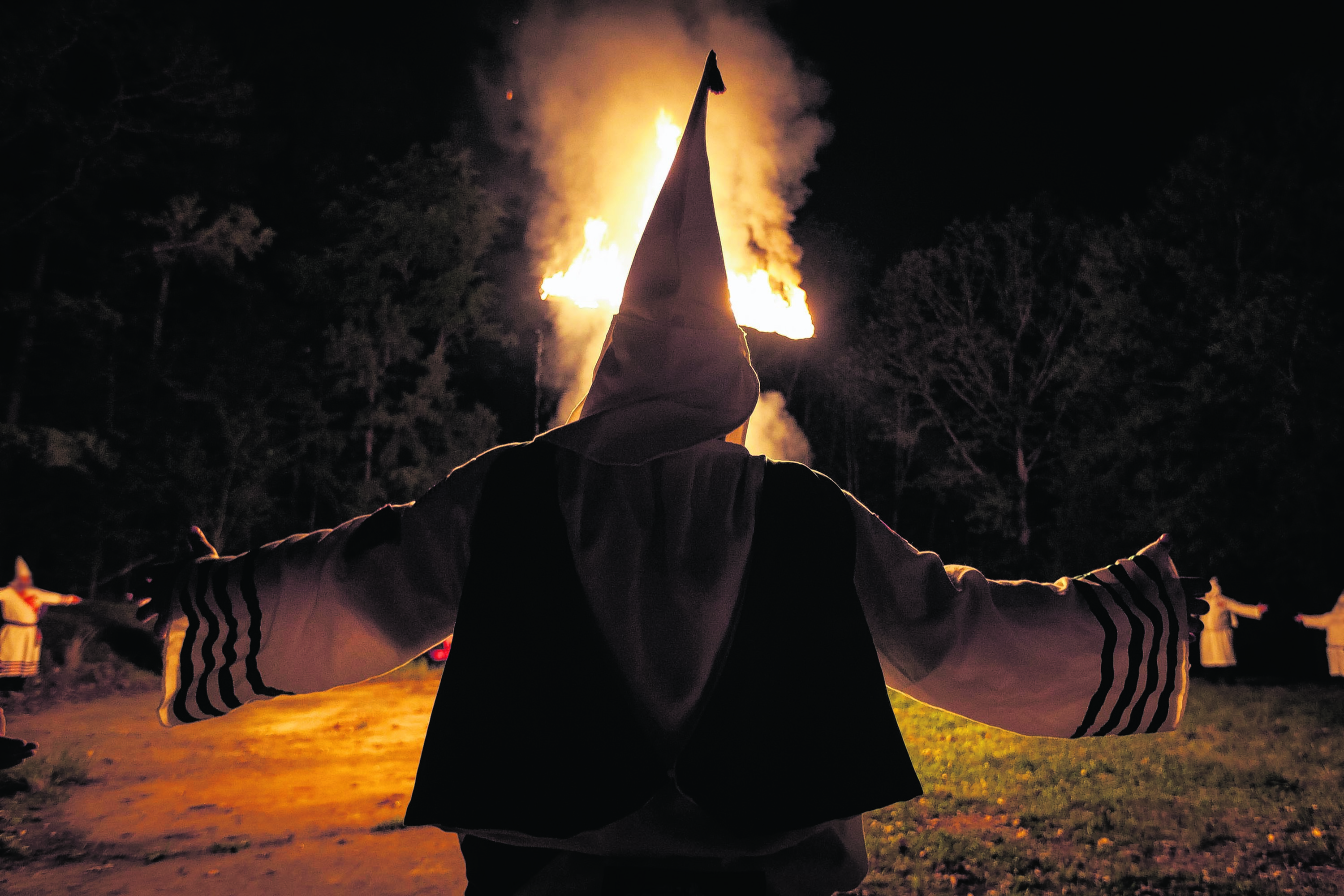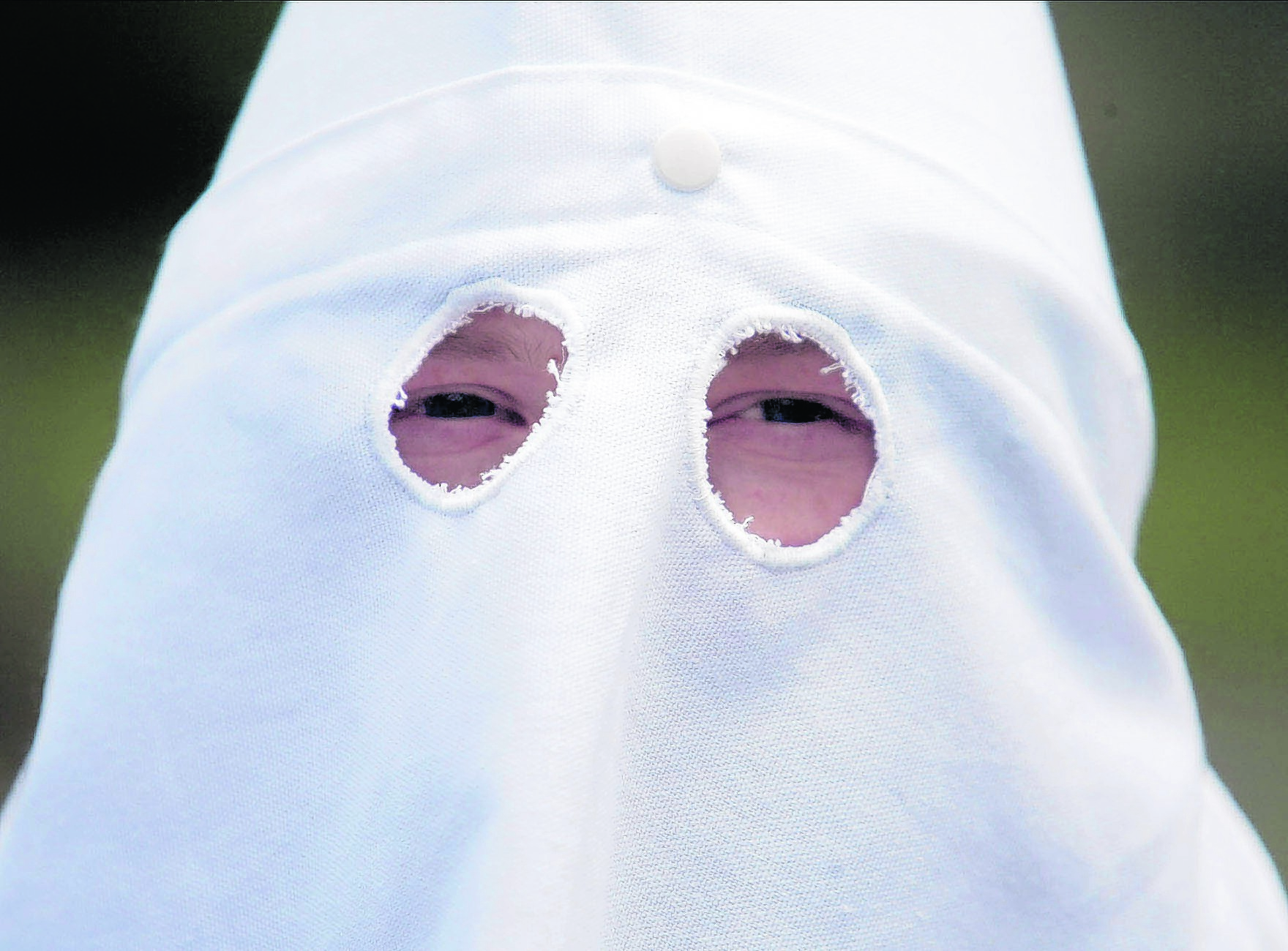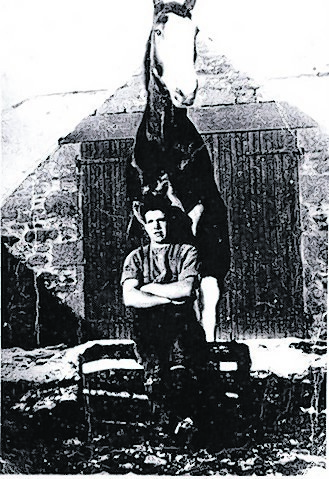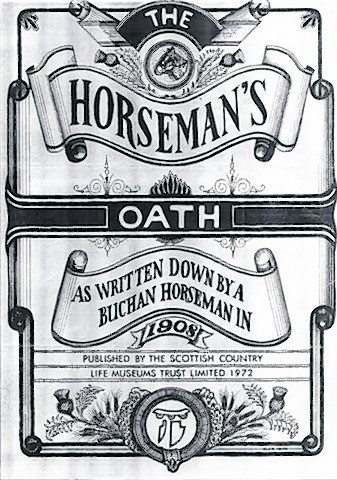Flames shoot into the sky as the wooden cross turns from a dark brown to flashing orange and red. Shadows of the long pointed hats cascade across the grass while their unmissable white outfits shine brighter.
They are the images that have become synonymous with the Ku Klux Klan, the hated and feared racist society which has adopted several guises down the years but always operated with the same sinister, chilling aim: to achieve what they see as ‘purification’ of American society.
Members stand accused of bombings, beatings and even the murders of both black and white activists over the years. As recently as June this year the Klan came under particular scrutiny after black worshippers were massacred in Charleston, South Carolina. The perpetrator seemed to be a loner but his online activity suggested he shared many principles with that of the KKK.
But this most cruel and spiteful organisation has a bizarre and almost comical past – and a past with very strong links to the north of Scotland.
Research suggests that there was a time when the forerunner of the KKK had no desire to rid the American states of any African American blood, but stood for gentler themes; when it was practically a social club for ex-confederate soldiers after the brutal American Civil War who used their now infamous white costumes to simply cover their faces as they played harmless pranks and to humour the locals.
It seemed in those early days, there was no hatred or prejudice associated with their antics.
More surprising, though, is the fact that this “social club” was started by ploughmen from rural Aberdeenshire who had made their way across the Atlantic in the early 19th century, desperate to escape the old world and to build a new life, a new community and a new society in the new world.
Research suggests that six young men from Buchan – desperate to improve their lot in life – emigrated to America and were quickly caught up in the brutal reality of a new country trying to establish its independence and way in the world.
As young men do, they were recruited during the American Civil War by the Confederate Army’s cavalry. It was a time of adventure and excitement and awful bloodshed…but at least they
survived
Following the end of the war, these men found themselves out of work and the boredom excruciating. They looked to entertain themselves, which led them to form a hell-raising secret society that would go on to morph and mutate into the home for racial hatred it remains today.
While others think the original members were American-born Scottish descendents, there is a common belief that the roots of the KKK lie in a very historical Scots tradition: horse whispering.
One man who has a wealth of knowledge about the latter is author and vet Russell Lyon who spent around five years researching a secret society prevalent in the north-east in the 18th century which would later form the basis for his book, The Quest for the Original Horse Whisperers.
Secret societies
It was the release of Nicolas Evans’s novel – and later a film adaptation featuring Robert Redford – that sparked Mr Lyon’s journey to find out more about these secret horse whisperer societies.
“I admit to being a little sceptical not to say cynical when I heard the claims that were being made about how whisperers could very quickly subdue and control even the wildest horse,” he said.
“But at the back of my mind something bothered me. I had a vague memory gathered from where I still do not know of other whisperers from the past.
“Could there be something in it and why are they called whisperers?
“It was a question to which no one seemed to know the answer. I decided to do some research and came up with some surprising results.”
He tried the Scottish Museum of Agriculture, the Royal Museum and the National Library of Scotland but his biggest breakthrough came when he wrote to regional newspapers across the country asking for assistance.
The response was quite astonishing, he said.
“There was a positive deluge of letters from old horsemen and their children, grandchildren and great-grandchildren not only from this country but also from Australia, New Zealand, Canada, and the United States.
“I was sent copies of hand-written notebooks of oaths, old remedies, cures and memories. Many old photographs also came my way as well as two tapes made by very old men telling of their life with heavy horses.”
He discovered that the original horse whisperers were all members of a very secret society – aptly named the Secret Society of Horsemen. Most ploughmen in Scotland’s north-east, particularly the Buchan area, were members. The society flourished around 250 years ago but the introduction of machinery such as tractors eventually led to most of the chapters’ demise.
The society had a strict code of silence and all new members were inducted with terrifying rituals in the dead of night in some remote barn in a quasi-religious ceremony in front of a makeshift altar.
“They were blindfolded and made to swear oaths never to reveal the secrets of the organisation,” Mr Lyon said.
“Anyone who revealed any secrets of the society would not only be outcasted but according to the oath would have their heart cut out with a horseman’s knife, their body torn apart by horses pulling in different directions and their mangled bodies buried.”
They claimed to be able to have complete control over horses by simply whispering a word into the animal’s ear.
During his research Mr Lyon discovered that it was all a lie – that these societies used herbal mixes to give them their mysterious powers over the horses.
Quasi-religious initiation ceremony
But more shocking than that was a connection the author came across between Scotland and one of the most feared societies in the world. He received two letters both asking whether he knew there was a connection between the KKK and the Secret Society of Horsemen.
He said the rituals of the early KKK were very similar to that of the horsemen societies such as new members being taken to remote barns in a “quasi-religious initiation ceremony”.
“All initiates of the KKK had to take an oath in which they had to swear never to reveal any of the secrets, symbols, signs, grips, passwords, mysteries or purposes of the Klan,” he said.
“These rituals and oaths were very similar to those of the Secret Society of Horseman. It was considered although it has never been proved beyond reasonable doubt that there had to be a strong link to the Original Horse Whisperers given that the founders of the Klan all had roots in Scotland from where the rituals of the secret society must have been known and handed down.
“One correspondent stated that the Confederate Army was very keen to enlist young men of Scottish descent as they were known for their skill with horses.”
He explained that in the beginning the society would merely dress up in sheets and pillow cases for fun and went out riding “and cauterwauling around the town to the amusement of the locals”.
“This was to give the impression of being spooks or ghosts,” he said.
“They were harmless bogeymen with gleaming death heads, skeletons and chains. So at first it was a social club but it was soon taken over by vigilante groups dedicated to driving black people out of politics.
“Sheet-clad horsemen roamed the countryside at night frightening and beating using weird mumbo jumbo and claiming to be the ghosts of confederate officers.”
It is believed that the society changed when a former general and slave-owner named Nathan Forest became their Grand Wizard in 1867. It was then that the lynching, torture and murder of black men became the reason for the Klan’s existence.
That original incarnation of the Klan is understood to have disappeared by the early 1870s. It didn’t reappear until 1915, inspired by the release of the D.W. Griffiths silent film The Birth of a Nation.
It chronicled the relationship of two families in a post-civil war America. It was a commercial success but highly controversial due to its portrayal of black men as unintelligent and aggressive and the Ku Klux Klan as a heroic force.
Within the film, Griffiths used a Scottish tradition – possibly emphasising the KKK’s roots. The burning cross or Crann Tara was originally used as a declaration of war between rival Scottish clans.
At its height the Klan is believed to have had about four million members, a shuddering example of the racist undertones in 1920s America.
More than 150 years after its birth, experts have calculated there may now be around 4,000 members in the US separated into different groups and mostly found in the southern states.
Few, though, realise that its origins lie not in the Deep South in America but a handful of exuberant and fun-loving, skilled horsemen from a small farming community in the north-east of Scotland.



